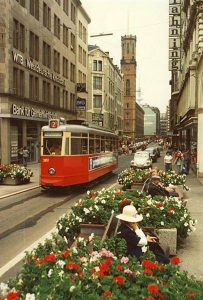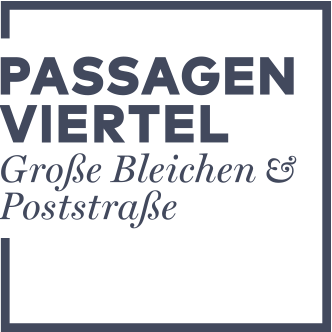1824
1824
From Horse Buses to Electric Trams
As of the middle of the 19th century, horse-drawn buses and trams helped manage the steadily growing volume of urban traffic. The electric tram phased in from 1894 connected the Rathausmarkt, Poststrasse/Königstrasse and Gänsemarkt stops until 1978. Today no public transport runs along this route and the only way to get from Rathausmarkt to Poststrasse is on foot.The first horse bus lines connected Hamburg with its neighbouring communities in 1824. From 1866, the first rail-bound horse-drawn tram ran between city hall and the Wandsbek customs office. The 1880s saw the electrification of all previously horse-drawn services on the main lines within Hamburg.
Around 1900 the combined urban transport network of Hamburg, Altona and Wandsbek was the largest of its kind in the world. The various lines were served by four different tram operators and there was no unified timetable. It took until 1923 for the two then surviving operators, Hamburg-Altonaer Centralbahn-Gesellschaft and Hamburger Hochbahn AG, to coordinate their timetables.
The lines were numbered for the first time in June 1900. Five tram lines ran through Königstrasse in 1909; by 1927 this number had risen to eleven. In 1911, seven lines stopped in Poststrasse. At one point in time, the entire Hamburg area was served by 40 electric tram lines. The lost and found office and a season ticket sales office of Strassen-Eisenbahn-Gesellschaft were centrally located in Kaisergalerie.

Between 1933 and 1943, Hamburger Hochbahn AG reduced the number of tram lines; only 18 lines operated after the second world war. Starting in 1960, the city’s steadily expanding modern subway system meant that tram services were progressively phased out throughout the city. On 30 September 1978, the last-ever line 2 tram rumbled from Schnelsen through Poststrasse to Rathausmarkt.
